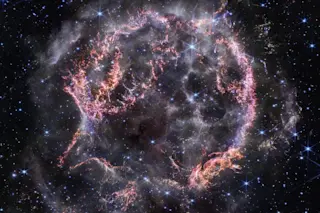In December's "How to Survive the End of the Universe (In 7 Steps)," physicist Michio Kaku describes how a future civilization might beat a path to another universe when time's up in our own. His survival guide to the end of the cosmos generated quite a few insightful letters and questions from our readers. We presented some of those queries to Kaku. His answers appear below.
Full name: Richard Shelton
E-mail: richard.shelton@navy.mil
Age: 44
Gender: M
Location: New Orleans, Louisiana
Question: As the universe expands, will the constants change? For example will e, pi, c, and h all change due to the expansion? If so, at what degree of change will life become impossible due to the change in physical processes?
Kaku responds: At the present time, there is some speculation among physicists that these constants may change with time. Mathematical constants, such as e and pi, will not change, ...














